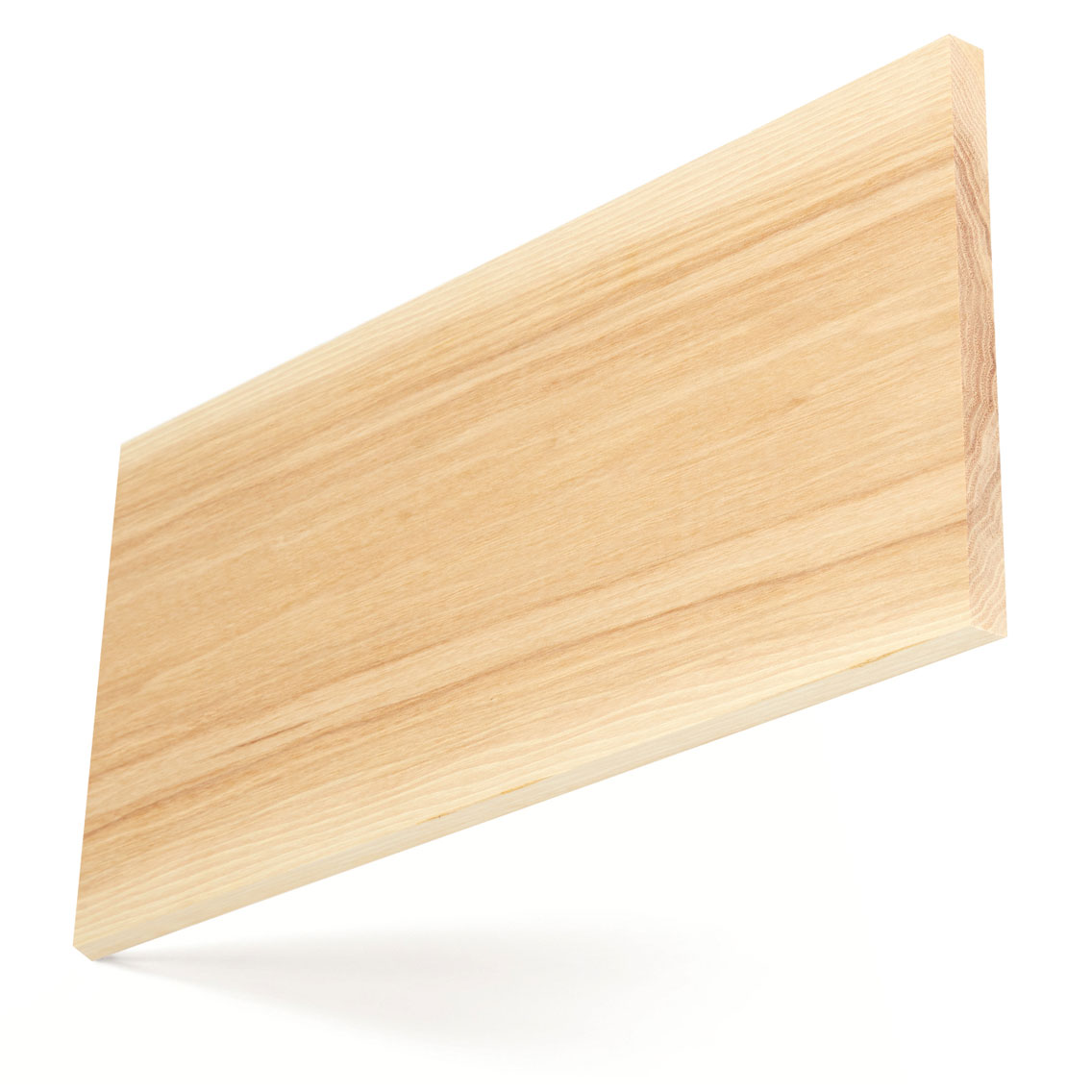American hickory
American hickory and pecan are different species of a very diverse group, but in the round (log) they are virtually indistinguishable from each other and therefore often processed by saw mills and sold mixed together.
Latin Name
Carya spp
Other Common Names
Often referred to as pecan in the South.

Forest Distribution
The hickories are an important group and the trees grow naturally throughout the Eastern U.S., from north to south. They are split into two groups; the more important true hickories and hickories producing pecan nuts, the latter being an important fruit-bearing tree. Trees vary in size enormously.
FOREST GROWTH
FIA data shows U.S. hickory growing stock is 742.3 million m3, 4.7% of total U.S. hardwood growing stock. American hickory is growing 14.6 million m3 per year while the harvest is 5.9 million m3 per year. The net volume (after harvest) is increasing 8.6 million m3 each year. U.S. hickory growth exceeds harvest in all significant producing states with the exception of Louisiana.
LCA Tool
seconds
Material Availability
Hickory sawn lumber is readily available in export grades, but sold unselected for colour and mixed. The NHLA FAS grade permits a minimum width of 4 inches (101.6mm). The lower NHLA grades (1 & 2 Common) can produce an attractive and fashionable rustic look. Lumber is mainly produced in thinner stock (4/4” & 5/4) although a limited amount of thicker material may be available.
Wood Description
The wood of hickory varies greatly in colour, grain pattern and appearance from this very diverse group. It is fine textured and the grain is usually straight but can be wavy or irregular. The sapwood is white and maybe tinged with brown, while the heartwood is pale to yellow brown to dark in colour. Deep purple mineral streaks are a natural characteristic. Bird pecks are also a common characteristic and neither is considered a defect.
Mechanical Properties
The wood of hickories is rather coarse and varies from strong to less strong but is heavy and very hard. It has good bending strength, shock resistance and excellent steam bending properties.
-
0.75
Specific Gravity (12% M.C.)
833 kg/m3
Average Weight (12% M.C.)
14.3%
Average Volume Shrinkage (Green to 6% M.C.)
138.590 MPa
Modulus of Rupture
15,583 MPa
Modulus of Elasticity
63.365 MPa
Compressive strength (parallel to grain)
N/A
Hardness
Oiled / Un-Oiled Appearance


Performance
- Hickory is considered difficult to machine and glue, and very hard to work with hand tools. It will hold nails and screws well but tends to split so pre-boring is advised. The wood can be sanded and polished to a good finish. It can be difficult to dry and has large shrinkage, which may affect stability under variable moisture conditions and in wider width material.
- The wood is non-resistant to heartwood decay and classed as moderately resistant to preservative treatment.
Main Uses
Furniture, cabinetry, ladders, striking tool handles dowels and sporting goods. Traditionally used by wheelwrights and for making drumsticks. The hardwearing properties of hickory make it an excellent choice for flooring, especially in situations of high traffic use. Historically the first wooden golf club shafts were made from hickory, and NHLA lumber graders still use the traditional flexible hickory measuring stick.